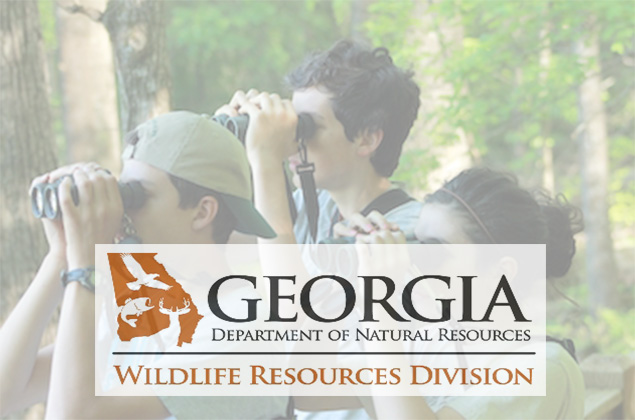
Six grant projects announced today by the Georgia Department of Natural Resources will improve public opportunities to see and learn about native animals and plants statewide.

The proposals chosen by the DNR Wildlife Resources Division for this year’s Wildlife Viewing Program grants range statewide from Talking Rock Nature Park in Pickens County to Burton 4-H Center on Tybee Island.
The grants, funded by the Georgia Nongame Wildlife Conservation Fund, help develop and enhance wildlife viewing options, with an emphasis on State Wildlife Action Plan species and habitats. Georgia’s Wildlife Action Plan is a comprehensive strategy to conserve these animals, plants and places before they become rarer and costlier to conserve or restore.
This year’s recipients and their proposals include:
- Big Haynes Creek Nature Center in Conyers – $3,000 to install a free-standing, ADA-compliant canoe and kayak launch at the 173-acre preserve.
- Georgia 4-H Club Foundation – $3,000 for new binoculars for ornithology class participants and others at Burton 4-H Center on Tybee Island.
- Southeastern Trust for Public Lands – $3,000 to build five wildlife viewing blinds with benches and signage at the 220-acre Talking Rock Nature Park in Talking Rock.
- Summerville Middle School – $2,576 for coordinators and students to create a native plants “sensory” garden for pollinators that will be accessible to the school and public in Summerville.
- Southern Conservation Trust – $1,500 to develop more informational signage about wildlife and habitats at the 120-acre Nesmith Preserve near Starr’s Mill High School in Fayetteville.
- The Learning Tree Academy – $3,000 for developing and expanding community accessible habitat for monarch butterflies and other pollinators at the Toccoa school.
The projects include work and support by partners that will significantly amplify the grants provided.
Each will also help people experience the state’s native wildlife, including species and habitats identified in the Wildlife Action Plan, said Matt Elliott, chief of DNR’s Wildlife Conservation Section. “We are really excited about this year’s geographic diversity of projects.”
The grants are small – capped at $3,000 each – but the interest they tap is big. In 2022, wildlife viewing involved more than 148 million people nationwide, or 57 percent of the population 16 and older. That total has been growing since the mid-1990s. In Georgia, an estimated 4.7 million residents, or almost three out of every, said they took part in wildlife viewing activities such as observing, feeding or photographing wildlife. Nationwide, wildlife viewing-related expenditures reached $250 billion in 2022.
Among other work, the DNR grants in 2023 helped provide gear, bat houses and signage for outreach about bats in Forsyth County and Athens, added trail signs promoting self-guided exploration at the 1,000-acre Cubihatcha Outdoor Education Center in Locust Grove, and funded cameras capturing time-lapse imagery of habitat changes on Little St. Simons Island.
The Wildlife Conservation Section works to restore and conserve nongame wildlife, rare native plant species and natural habitats through research, management and education. The section depends largely on fundraisers, grants and donations to the Nongame Wildlife Conservation Fund. Sales and renewals of DNR’s eagle and monarch license plates, plus renewals of the hummingbird tag, are the top fundraiser.
LEARN MORE

